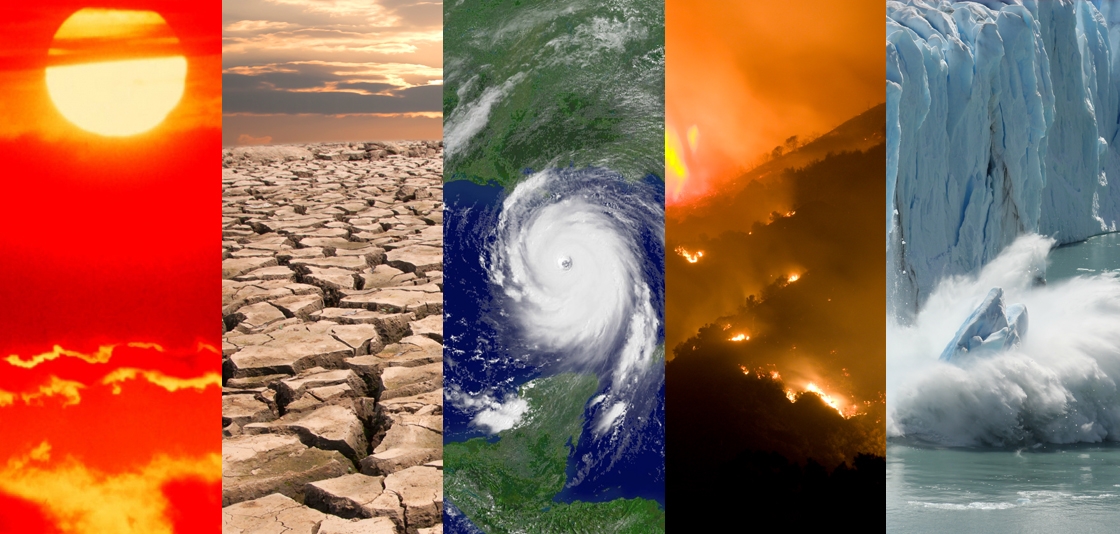The average global temperature in July was 1.71 degrees F above the 20th-century average of 60.4 degrees, making it the hottest July in the 140-year record, according to scientists at NOAA’s National Centers for Environmental Information. The previous hottest month on record was July 2016.
Nine of the 10 hottest Julys have occurred since 2005—with the last five years ranking as the five hottest. Last month was also the 43rd consecutive July and 415th consecutive month with above-average global temperatures.
Year to date I January through July
The period from January through July produced a global temperature that was 1.71 degrees F above the 20th-century average of 56.9 degrees, tying with 2017 as the second-hottest year to date on record.
It was the hottest year to date for parts of North and South America, Asia, Australia, New Zealand, the southern half of Africa, portions of the western Pacific Ocean, western Indian Ocean and the Atlantic Ocean.

An annotated map of the world showing notable climate events that occurred around the world in July 2019. For details, see the short bulleted list below in our story (NOAA)Download Image
More notable stats and facts
Record-low sea ice: Average Arctic sea ice set a record low for July, running 19.8% below average – surpassing the previous historic low of July 2012.
Average Antarctic sea-ice coverage was 4.3% below the 1981-2010 average, making it the smallest for July in the 41-year record.
Some cool spots: Parts of Scandinavia and western and eastern Russia had temperatures at least 2.7 degrees F below average.

noaa.gov
La temperatura global promedio en julio fue de 1.71 grados F por encima del promedio del siglo XX de 60.4 grados, lo que lo convierte en el julio más caluroso en los 140 años, según los científicos de los Centros Nacionales de Información Ambiental de NOAA. El mes más caluroso registrado anteriormente fue julio de 2016.
Nueve de los 10 mejores julio han ocurrido desde 2005, con los últimos cinco años como los cinco más calientes. El mes pasado también fue el 43 ° mes consecutivo de julio y el 415 ° mes consecutivo con temperaturas globales superiores a la media.
Año hasta la fecha I enero a julio
El período de enero a julio produjo una temperatura global que fue 1.71 grados F por encima del promedio del siglo XX de 56.9 grados, empatando con 2017 como el segundo año más caluroso registrado hasta la fecha.
Fue el año más caluroso hasta la fecha para partes de América del Norte y del Sur, Asia, Australia, Nueva Zelanda, la mitad sur de África, porciones del Océano Pacífico occidental, el Océano Índico occidental y el Océano Atlántico.
Un mapa anotado del mundo que muestra eventos climáticos notables que ocurrieron en todo el mundo en julio de 2019. Para más detalles, vea la breve lista con viñetas a continuación en nuestra historia
Un mapa anotado del mundo que muestra eventos climáticos notables que ocurrieron en todo el mundo en julio de 2019. Para obtener más detalles, consulte la breve lista con viñetas a continuación en nuestra historia (NOAA)
Descargar imagen
Estadísticas y hechos más notables
Hielo marino récord: el hielo marino promedio del Ártico estableció un mínimo récord para julio, un 19.8% por debajo del promedio, superando el mínimo histórico anterior de julio de 2012.
La cobertura promedio del hielo marino antártico fue 4.3% por debajo del promedio de 1981-2010, por lo que es la más pequeña de julio en el registro de 41 años.
Algunos lugares fríos: partes de Escandinavia y Rusia occidental y oriental tenían temperaturas de al menos 2.7 grados F por debajo del promedio.


